Mina Khan
Gemini 1.5: Unlocking multimodal understanding across millions of tokens of context
Mar 08, 2024Abstract:In this report, we present the latest model of the Gemini family, Gemini 1.5 Pro, a highly compute-efficient multimodal mixture-of-experts model capable of recalling and reasoning over fine-grained information from millions of tokens of context, including multiple long documents and hours of video and audio. Gemini 1.5 Pro achieves near-perfect recall on long-context retrieval tasks across modalities, improves the state-of-the-art in long-document QA, long-video QA and long-context ASR, and matches or surpasses Gemini 1.0 Ultra's state-of-the-art performance across a broad set of benchmarks. Studying the limits of Gemini 1.5 Pro's long-context ability, we find continued improvement in next-token prediction and near-perfect retrieval (>99%) up to at least 10M tokens, a generational leap over existing models such as Claude 2.1 (200k) and GPT-4 Turbo (128k). Finally, we highlight surprising new capabilities of large language models at the frontier; when given a grammar manual for Kalamang, a language with fewer than 200 speakers worldwide, the model learns to translate English to Kalamang at a similar level to a person who learned from the same content.
Gemini: A Family of Highly Capable Multimodal Models
Dec 19, 2023Abstract:This report introduces a new family of multimodal models, Gemini, that exhibit remarkable capabilities across image, audio, video, and text understanding. The Gemini family consists of Ultra, Pro, and Nano sizes, suitable for applications ranging from complex reasoning tasks to on-device memory-constrained use-cases. Evaluation on a broad range of benchmarks shows that our most-capable Gemini Ultra model advances the state of the art in 30 of 32 of these benchmarks - notably being the first model to achieve human-expert performance on the well-studied exam benchmark MMLU, and improving the state of the art in every one of the 20 multimodal benchmarks we examined. We believe that the new capabilities of Gemini models in cross-modal reasoning and language understanding will enable a wide variety of use cases and we discuss our approach toward deploying them responsibly to users.
TacticAI: an AI assistant for football tactics
Oct 17, 2023Abstract:Identifying key patterns of tactics implemented by rival teams, and developing effective responses, lies at the heart of modern football. However, doing so algorithmically remains an open research challenge. To address this unmet need, we propose TacticAI, an AI football tactics assistant developed and evaluated in close collaboration with domain experts from Liverpool FC. We focus on analysing corner kicks, as they offer coaches the most direct opportunities for interventions and improvements. TacticAI incorporates both a predictive and a generative component, allowing the coaches to effectively sample and explore alternative player setups for each corner kick routine and to select those with the highest predicted likelihood of success. We validate TacticAI on a number of relevant benchmark tasks: predicting receivers and shot attempts and recommending player position adjustments. The utility of TacticAI is validated by a qualitative study conducted with football domain experts at Liverpool FC. We show that TacticAI's model suggestions are not only indistinguishable from real tactics, but also favoured over existing tactics 90% of the time, and that TacticAI offers an effective corner kick retrieval system. TacticAI achieves these results despite the limited availability of gold-standard data, achieving data efficiency through geometric deep learning.
Developing, Evaluating and Scaling Learning Agents in Multi-Agent Environments
Sep 22, 2022Abstract:The Game Theory & Multi-Agent team at DeepMind studies several aspects of multi-agent learning ranging from computing approximations to fundamental concepts in game theory to simulating social dilemmas in rich spatial environments and training 3-d humanoids in difficult team coordination tasks. A signature aim of our group is to use the resources and expertise made available to us at DeepMind in deep reinforcement learning to explore multi-agent systems in complex environments and use these benchmarks to advance our understanding. Here, we summarise the recent work of our team and present a taxonomy that we feel highlights many important open challenges in multi-agent research.
Mastering the Game of Stratego with Model-Free Multiagent Reinforcement Learning
Jun 30, 2022
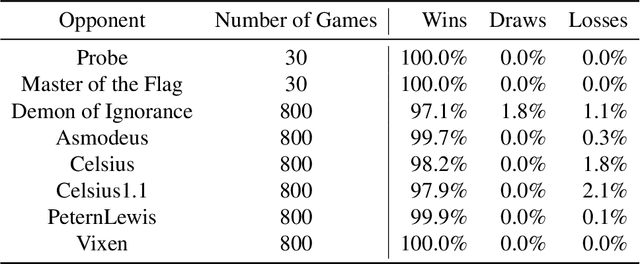
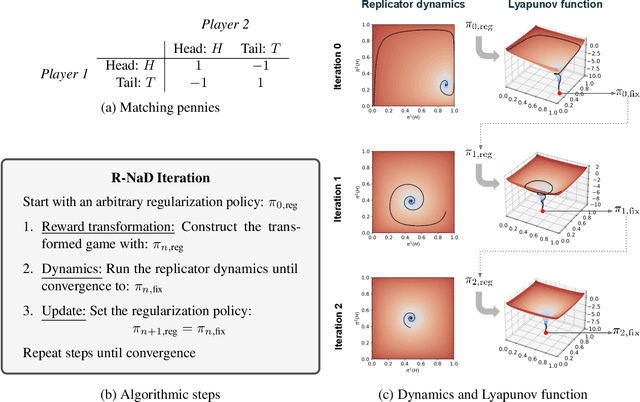
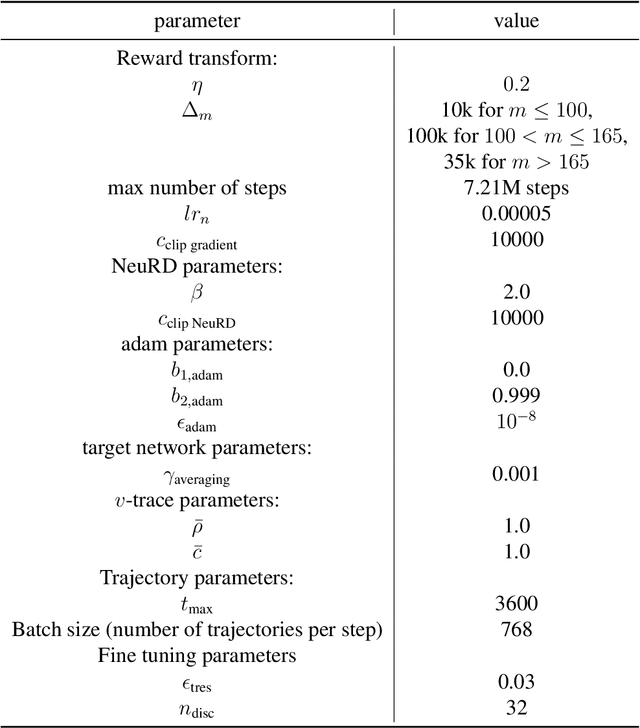
Abstract:We introduce DeepNash, an autonomous agent capable of learning to play the imperfect information game Stratego from scratch, up to a human expert level. Stratego is one of the few iconic board games that Artificial Intelligence (AI) has not yet mastered. This popular game has an enormous game tree on the order of $10^{535}$ nodes, i.e., $10^{175}$ times larger than that of Go. It has the additional complexity of requiring decision-making under imperfect information, similar to Texas hold'em poker, which has a significantly smaller game tree (on the order of $10^{164}$ nodes). Decisions in Stratego are made over a large number of discrete actions with no obvious link between action and outcome. Episodes are long, with often hundreds of moves before a player wins, and situations in Stratego can not easily be broken down into manageably-sized sub-problems as in poker. For these reasons, Stratego has been a grand challenge for the field of AI for decades, and existing AI methods barely reach an amateur level of play. DeepNash uses a game-theoretic, model-free deep reinforcement learning method, without search, that learns to master Stratego via self-play. The Regularised Nash Dynamics (R-NaD) algorithm, a key component of DeepNash, converges to an approximate Nash equilibrium, instead of 'cycling' around it, by directly modifying the underlying multi-agent learning dynamics. DeepNash beats existing state-of-the-art AI methods in Stratego and achieved a yearly (2022) and all-time top-3 rank on the Gravon games platform, competing with human expert players.
Pretrained Encoders are All You Need
Jun 09, 2021
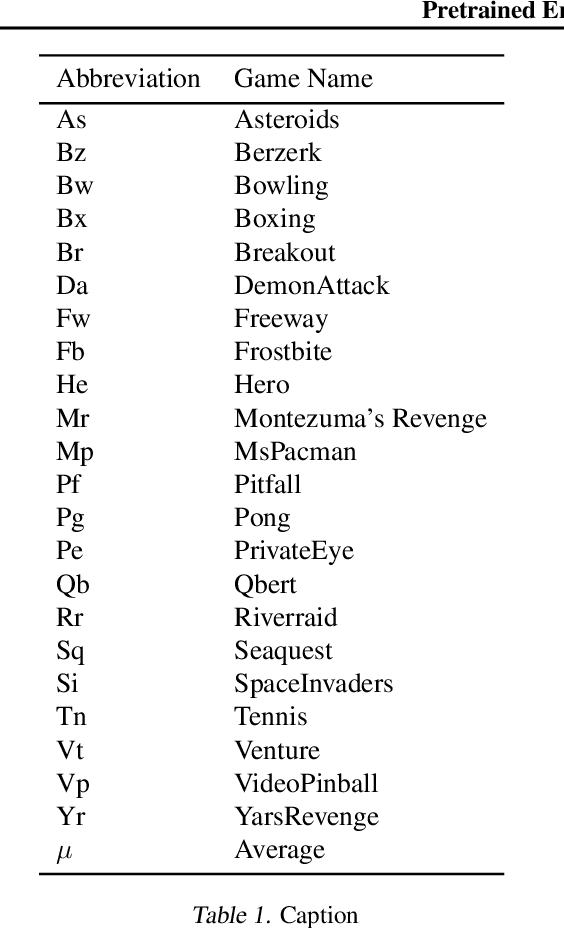


Abstract:Data-efficiency and generalization are key challenges in deep learning and deep reinforcement learning as many models are trained on large-scale, domain-specific, and expensive-to-label datasets. Self-supervised models trained on large-scale uncurated datasets have shown successful transfer to diverse settings. We investigate using pretrained image representations and spatio-temporal attention for state representation learning in Atari. We also explore fine-tuning pretrained representations with self-supervised techniques, i.e., contrastive predictive coding, spatio-temporal contrastive learning, and augmentations. Our results show that pretrained representations are at par with state-of-the-art self-supervised methods trained on domain-specific data. Pretrained representations, thus, yield data and compute-efficient state representations. https://github.com/PAL-ML/PEARL_v1
Personalizing Pre-trained Models
Jun 02, 2021
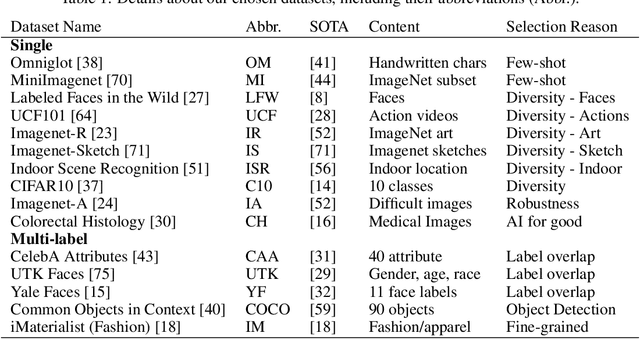
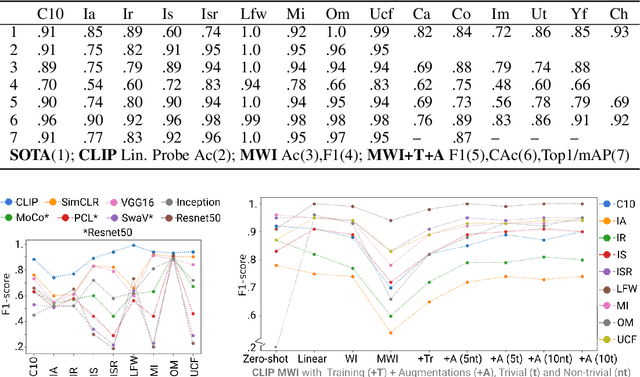

Abstract:Self-supervised or weakly supervised models trained on large-scale datasets have shown sample-efficient transfer to diverse datasets in few-shot settings. We consider how upstream pretrained models can be leveraged for downstream few-shot, multilabel, and continual learning tasks. Our model CLIPPER (CLIP PERsonalized) uses image representations from CLIP, a large-scale image representation learning model trained using weak natural language supervision. We developed a technique, called Multi-label Weight Imprinting (MWI), for multi-label, continual, and few-shot learning, and CLIPPER uses MWI with image representations from CLIP. We evaluated CLIPPER on 10 single-label and 5 multi-label datasets. Our model shows robust and competitive performance, and we set new benchmarks for few-shot, multi-label, and continual learning. Our lightweight technique is also compute-efficient and enables privacy-preserving applications as the data is not sent to the upstream model for fine-tuning.
PAL: Intelligence Augmentation using Egocentric Visual Context Detection
May 22, 2021


Abstract:Egocentric visual context detection can support intelligence augmentation applications. We created a wearable system, called PAL, for wearable, personalized, and privacy-preserving egocentric visual context detection. PAL has a wearable device with a camera, heart-rate sensor, on-device deep learning, and audio input/output. PAL also has a mobile/web application for personalized context labeling. We used on-device deep learning models for generic object and face detection, low-shot custom face and context recognition (e.g., activities like brushing teeth), and custom context clustering (e.g., indoor locations). The models had over 80\% accuracy in in-the-wild contexts (~1000 images) and we tested PAL for intelligence augmentation applications like behavior change. We have made PAL is open-source to further support intelligence augmentation using personalized and privacy-preserving egocentric visual contexts.
 Add to Chrome
Add to Chrome Add to Firefox
Add to Firefox Add to Edge
Add to Edge